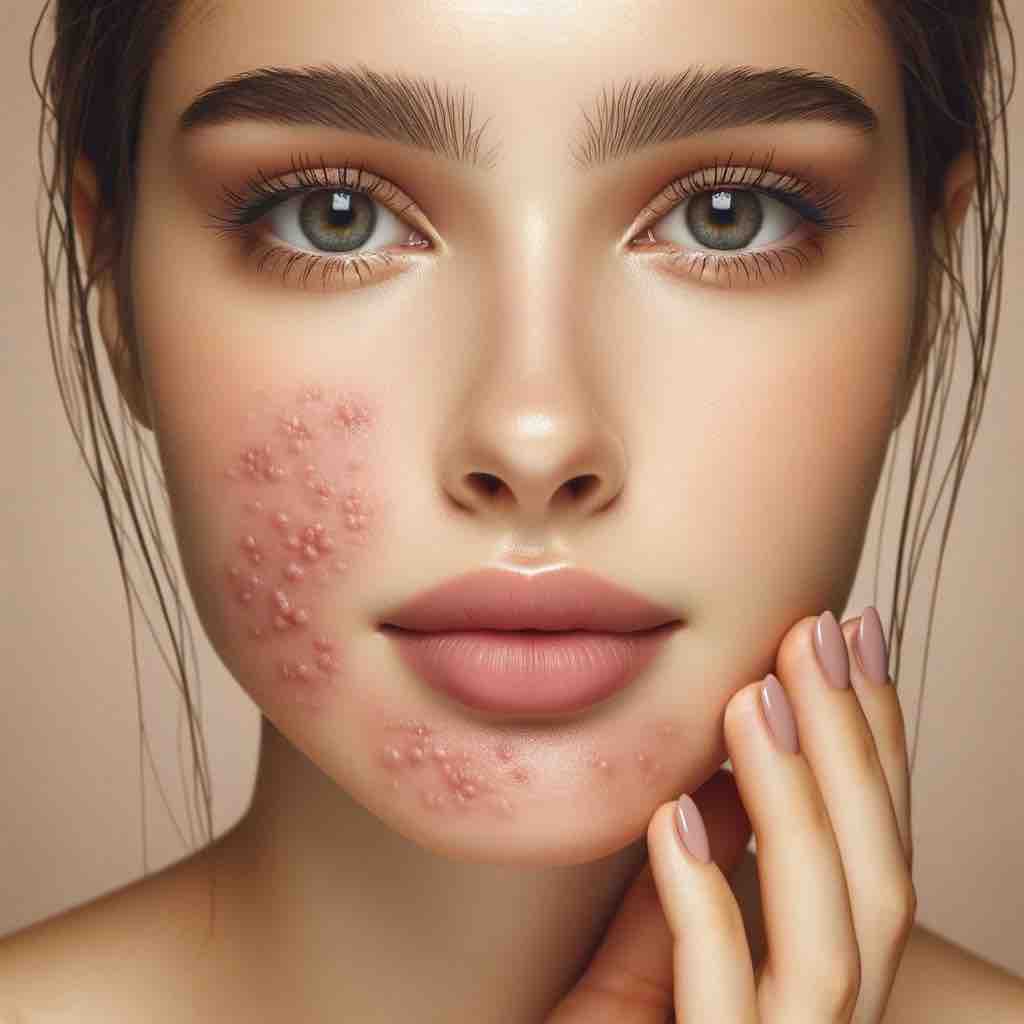
Soothing Eczema with Oatmeal Baths: A Complete Guide
Introduction
For many who suffer from eczema, finding relief can be a relentless quest, filled with a myriad of lotions, creams, and remedies. Amidst this search, one natural solution stands out for its simplicity and effectiveness: the oatmeal bath. This age-old remedy, cherished for its soothing properties, offers a gentle yet powerful means to calm the irritated skin that eczema brings.
In this guide, we dive into the world of oatmeal baths, exploring how this humble kitchen staple can transform into a skin-soothing elixir. Ideal for those seeking a natural, holistic approach to managing eczema, oatmeal baths provide more than just symptomatic relief; they offer a moment of tranquility and a break from the discomfort that eczema can cause. So, whether you’re a long-time eczema warrior or new to the condition, join us as we uncover the secrets of oatmeal baths and how they can bring soothing relief to your skin.
Section 1: Understanding Eczema and Oatmeal’s Role
Eczema, a common skin condition, manifests as red, itchy, and inflamed patches on the skin. It can be a source of discomfort and frustration for many, impacting daily life and well-being. The quest for relief often leads to an array of treatments, but one natural remedy stands out for its gentle effectiveness: oatmeal.
Oatmeal, particularly colloidal oatmeal, has long been recognized for its skin-soothing properties. Rich in compounds such as phenols, starches, and beta-glucans, oatmeal offers a wealth of benefits for eczema-affected skin. These include:
- Anti-inflammatory Action: The beta-glucans in oatmeal help reduce inflammation, providing relief from itching and irritation.
- Moisturizing Properties: Oatmeal’s starches hold water, creating a protective, moisturizing film over the skin.
- Antioxidant Benefits: Phenols in oatmeal limit skin cell damage, aiding in skin repair and rejuvenation.
- Gentle Exfoliation: When mixed with water, oatmeal acts as a soft exfoliator, helping to remove dead skin cells and unclog pores.
Understanding the role of oatmeal in alleviating eczema symptoms is the first step in harnessing its full potential for skin relief.
Section 2: The Science Behind Oatmeal for Eczema
Oatmeal’s effectiveness in treating eczema isn’t just anecdotal; it’s backed by science. Colloidal oatmeal, a finely ground oatmeal, is particularly potent in treating dermatitis and other eczema symptoms. Its antioxidants help reduce inflammation and itching, while its starches provide crucial water-holding properties. When applied in a bath, colloidal oatmeal creates a moisturizing protective film over the skin, helping it stay hydrated.
Research studies have validated the effectiveness of oatmeal in managing eczema symptoms. In children and adults with atopic dermatitis, colloidal oatmeal treatments have shown significant improvement in skin condition, reducing symptoms like itching, dryness, and roughness. These studies underscore oatmeal’s role as a valuable, anti-inflammatory agent in eczema care.
In the next sections, we’ll explore how to choose the right oatmeal for your bath and prepare the perfect oatmeal bath for maximum eczema relief.
Section 3: Choosing the Right Oatmeal
When it comes to oatmeal baths for eczema, not all oatmeal is created equal. The key is to use colloidal oatmeal – a type of oatmeal that is finely ground. This form is different from the oats you might eat for breakfast. Colloidal oatmeal is designed to suspend in bath water, creating a silky, milky texture that doesn’t clog drains and offers maximum skin benefits.
Making Colloidal Oatmeal at Home
You don’t always have to buy colloidal oatmeal; you can make it yourself. Here’s how:
- Start with organic rolled oats – these are readily available in most grocery stores.
- Use a coffee grinder, blender, or food processor to grind the oats into a very fine powder. The finer the powder, the better it will mix with your bath water.
- To test if it’s ground finely enough, mix a tablespoon in a glass of water. The oat powder should blend smoothly without settling at the bottom.
Opting for high-quality oats and grinding them finely ensures you get the most out of your oatmeal bath.
Section 4: Preparing the Perfect Oatmeal Bath
Now that you have your colloidal oatmeal, it’s time to prepare your soothing bath. Here’s a step-by-step guide:
- Running the Bath: Start by pouring half a cup of colloidal oatmeal into the tub. Use a cup if your skin is particularly dry. Fill the tub with lukewarm water – hot water can exacerbate eczema symptoms by drying out your skin.
- Creating a Relaxing Environment: While the tub is filling, consider setting up a relaxing atmosphere. Light a candle, play some soft music, or practice deep breathing. This can help reduce stress, which is often linked to eczema flares.
- The Bathing Ritual: Soak in the bath for 15-30 minutes. Allow all parts of your body to be submerged for maximum benefit. For children, a shorter soak of 5-15 minutes is recommended.
- Aftercare: Post-bath, rinse off with lukewarm water to remove any oatmeal residue. Pat your skin dry gently, leaving it slightly damp. Follow up immediately with a moisturizer to lock in hydration. This “soak and seal” method is highly effective for keeping eczema-prone skin moisturized.
Taking regular oatmeal baths can be a game-changer in managing eczema. It’s a simple, natural way to keep your skin calm and hydrated.
In the next section, we’ll explore alternatives for those who may not have a bathtub and other ways to incorporate oatmeal into your skincare routine.

Section 5: Alternatives to Oatmeal Baths
Not everyone has access to a bathtub, but that doesn’t mean you can’t enjoy the benefits of oatmeal for eczema. Here are some alternatives:
Oatmeal Shower
- Prepare an Oatmeal Bag: Fill a fine mesh bag (like muslin cloth or pantyhose) with about 1 cup of colloidal oatmeal. Ensure it’s securely knotted to prevent spillage.
- Shower Setup: Take a lukewarm shower using a mild, fragrance-free cleanser. Avoid hot water as it can dry out your skin.
- Using the Oatmeal Bag: Hang the oatmeal-filled bag under the showerhead. As you shower, gently squeeze the bag, allowing the milky oatmeal liquid to mix with the water and flow over your body.
- Application: Focus on areas with eczema flare-ups, but avoid vigorous scrubbing. Let the oatmeal-infused water sit on your skin for 10-15 minutes for maximum benefit.
Oatmeal Paste
- Making the Paste: Cook oatmeal in hot water, let it cool, and then apply the room-temperature paste to affected areas in the shower.
- Application: After wetting your skin, turn off the water and apply the paste. Let it sit before carefully rinsing it off.
After either method, rinse off any residue with lukewarm water and follow up with a moisturizer.
Section 6: Aftercare and Precautions
Post-oatmeal bath or shower, the way you treat your skin is crucial. Pat your skin dry gently, and within three minutes, apply a moisturizer to seal in the moisture. This is essential for keeping eczema-prone skin hydrated.
Precautions
- Allergy Test: If you’re unsure about an oat allergy, perform a patch test before a full bath or shower.
- Consult a Dermatologist: It’s always wise to discuss new skincare routines with a dermatologist, especially for conditions like eczema.
Section 7: Incorporating Oatmeal in Daily Skincare
Besides baths and showers, oatmeal can be a regular part of your skincare:
- Oatmeal-Based Skincare Products: Many lotions, creams, and cleansers contain oatmeal. These can be a daily aid in managing eczema symptoms.
- DIY Oatmeal Skincare: Make your own oatmeal-based skincare products, like masks or scrubs, for a natural, cost-effective solution.
Conclusion
Embracing oatmeal in your skincare routine can provide significant relief from eczema. Its natural, soothing properties make it an ideal choice for those seeking gentle and effective skin care solutions. Whether through baths, showers, or daily products, oatmeal can be a cornerstone in managing eczema and achieving healthier, happier skin.
Further Reading:
Embark on a journey towards understanding and managing eczema and dermatitis better by exploring our comprehensive guides. Learn about the dietary practices that could ease your eczema symptoms in our post on foods to embrace and avoid for eczema relief. Delve deeper into the irritants that often go unnoticed in our discussion on dermatitis: the hidden irritant.
Discover the underlying causes and effective coping mechanisms for these skin conditions in our post on eczema and dermatitis: causes and coping mechanisms. Lastly, explore a soothing remedy by learning about the benefits of oatmeal baths for eczema and dermatitis. Our blogs aim to provide a holistic approach towards understanding and managing these skin conditions better, making your path towards relief an informed and effective one.
10 FAQs About Oatmeal Baths for Eczema
- What makes oatmeal effective for treating eczema?
- Oatmeal contains compounds like beta-glucans, phenols, and starches, which offer anti-inflammatory, antioxidant, and skin-moisturizing benefits. These properties help soothe itching, irritation, and dryness associated with eczema.
- Can I use regular oatmeal for an eczema bath?
- While regular oatmeal can be used, colloidal oatmeal is more effective for baths. It’s finely ground, ensuring it mixes well with water to create a soothing, milky solution that won’t clog drains.
- How do I prepare an oatmeal bath for eczema?
- To prepare an oatmeal bath, add half to one cup of colloidal oatmeal to lukewarm bath water. Stir to mix well, then soak in the bath for 15-30 minutes. After the bath, rinse with lukewarm water and moisturize your skin.
- Is an oatmeal bath safe for all ages?
- Yes, oatmeal baths are safe for all ages, including babies and elderly individuals. However, it’s always recommended to perform a patch test first, especially for young children, to rule out any allergies.
- Can I make colloidal oatmeal at home?
- Yes, you can make colloidal oatmeal at home by grinding regular rolled oats into a very fine powder using a coffee grinder, blender, or food processor.
- How often can I take an oatmeal bath for eczema?
- Oatmeal baths can be taken daily, especially during eczema flare-ups. They are a gentle remedy and can be a regular part of your skincare routine.
- What should I do after an oatmeal bath?
- After an oatmeal bath, gently pat your skin dry and apply a moisturizer while the skin is still damp. This helps to lock in moisture and enhances the soothing effects of the bath.
- Can oatmeal baths help with severe eczema?
- Oatmeal baths are effective in relieving symptoms of mild to moderate eczema. For severe eczema, they can be used as a complementary treatment alongside prescribed medications.
- Are there any side effects of oatmeal baths?
- Oatmeal baths are generally safe with minimal risk of side effects. However, if you have an oat or gluten allergy, it’s advisable to avoid oatmeal baths.
- Can I use oatmeal in other forms for eczema treatment?
- Yes, besides baths, colloidal oatmeal can be used in showers or as a paste for direct skin application. It’s also a common ingredient in many skincare products formulated for sensitive skin.
Blog Tags
oatmeal bath, eczema relief, natural skincare, colloidal oatmeal, homemade skincare, sensitive skin treatment, anti-inflammatory skincare, moisturizing bath, DIY oatmeal bath, eczema management











